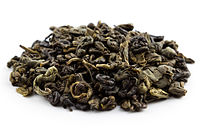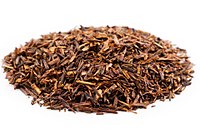
Furosine and 5-hydroxymethylfurfural as chemical markers of tea processing and storage
Sign Up to like & getrecommendations! Published in 2019 at "Food Control"
DOI: 10.1016/j.foodcont.2018.12.029
Abstract: Abstract One of the most consumed beverages around the world is tea, but little is known about how tea quality can be monitored during storage and processing. Thus, the objective of this research was to… read more here.
Keywords: furosine hydroxymethylfurfural; tea processing; processing storage; storage ... See more keywords

Formation of Nε-(carboxymethyl)lysine and Nε-(carboxyethyl)lysine during black tea processing.
Sign Up to like & getrecommendations! Published in 2019 at "Food research international"
DOI: 10.1016/j.foodres.2018.12.051
Abstract: This study selected common processing methods for orthodox black tea and investigated changes in the levels of Nε-(carboxymethyl)lysine (CML), Nε-(carboxyethyl)lysine (CEL), lysine, and polyphenols during each processing stage and using different parameters of each processing… read more here.
Keywords: black tea; tea; tea processing; cml cel ... See more keywords

Genome-wide analysis and metabolic profiling unveil the role of peroxidase CsGPX3 in theaflavin production in black tea processing.
Sign Up to like & getrecommendations! Published in 2020 at "Food research international"
DOI: 10.1016/j.foodres.2020.109677
Abstract: Plucked tea leaves can be processed into black tea (Camellia sinensis), which is rich in health-promoting molecules, including flavonoid antioxidants. During black tea processing, theaflavins (TFs) and thearubigins (TRs) are generated via the successive oxidation… read more here.
Keywords: tea processing; production; pod; tea ... See more keywords

Atmospheric aerosols around three different types of coal-based industries: Emission parameters, cytotoxicity assay, and principal component analysis
Sign Up to like & getrecommendations! Published in 2018 at "Journal of Aerosol Science"
DOI: 10.1016/j.jaerosci.2018.08.003
Abstract: Abstract The present paper describes a comparison of the air quality and aerosols emission parameters around tea processing, coke oven and brick kiln industries that use high sulphur coals in their processes. The concentrations of… read more here.
Keywords: principal component; emission parameters; industry; tea processing ... See more keywords

Molecular and Biochemical Characterization of Jasmonic Acid Carboxyl Methyltransferase Involved in Aroma Compound Production of Methyl Jasmonate during Black Tea Processing.
Sign Up to like & getrecommendations! Published in 2021 at "Journal of agricultural and food chemistry"
DOI: 10.1021/acs.jafc.0c06248
Abstract: Methyl jasmonate (MeJA), a volatile organic compound, is a principal flowery aromatic compound in tea. During the processing of black tea, MeJA is produced by jasmonic acid carboxyl methyltransferase (JMT) of the jasmonic acid (JA)… read more here.
Keywords: tea processing; jasmonic acid; compound; tea ... See more keywords

Effects of processing procedures on the formation of aroma intensity and odor characteristic of Benshan tea (Oolong tea, Camellia sentences).
Sign Up to like & getrecommendations! Published in 2023 at "Heliyon"
DOI: 10.2139/ssrn.4232749
Abstract: Benshan tea is a kind of oolong tea, and Benshan (Camellia sinensis) tea tree originates from Anxi County of Fujian Province in China, which is a national tea tree breed. Tea processing is the key… read more here.
Keywords: oolong tea; benshan tea; tea; formation ... See more keywords